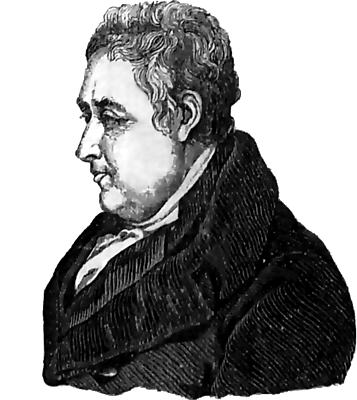 |
 |
|||
|
|
Henry was born in 1752, the eldest of the five children of Sir Henry Englefield, bart. of Whiteknights Park in Earley (Berkshire) & Vastern Manor in Wootton Bassett (Wiltshire), by his second wife, Catharine, daughter of Sir Charles Bucke, bart. He succeeded his father in the baronetage on 25th May 1780, but he did not marry, and the title became extinct upon his death. Englefield was elected a fellow of the Society of Antiquaries in 1779, was for many years one of its vice-presidents and, for a short time, its president, succeeding Marquis Townshend. Under his direction, the society published the series of engravings of English cathedrals and churches, Englefield himself contributing to the descriptive dissertations (1797–1813). He made ten or more contributions to the ‘Archæologia’ journal, principally on Roman antiquities and ecclesiastical architecture. He joined the Dilettanti Society in 1781 and was, for fourteen years, its secretary. He possessed a ‘choice cabinet’ of ancient vases, now dispersed, formed from the Coghill, Cawdor and Chinnery sales. The vases were drawn and engraved by H. Moses in Vases from the Collection of Sir H. Englefield (1820). He purchased Thomas Sandby's ‘Views and Sketches of St. George's Chapel, Windsor’ at the Sandby sale in 1799. Englefield was elected a fellow of the Royal Society in 1778. He made astronomical and other communications to it in 1781 and 1784. He also made scientific communications to the Linnean Society, of which he was a fellow, and to the Royal Institution, and contributed to ‘Nicholson's Journal’ and to Tilloch's ‘Philosophical Magazine’. His ‘Discovery of a Lake from Madder’ obtained the gold medal of the Society of Arts. He was president of the Society of Antiquaries 1811–12. His well-known ‘Description of the Principal Picturesque Beauties, Antiquities and Geological Phenomena of the Isle of Wight’ (1816) embodied observations made between 1799 & 1801, when he spent the summer on the Island. As a Roman Catholic, Englefield took a prominent part in his church’s affairs in England, being elected, in 1782, a member of the Catholic Committee, formed by the laity for the promotion of Catholic interests, a body which subsequently found itself in conflict with the vicars Apostolic. In the early stages of this dispute, he was one of the moving spirits and contributed a pamphlet, ‘A Letter to the Author of the “Review of the Case of the Protestant Dissenters,”’ (1790) defending the principles of his community to Dr. Horsley, the Anglican prelate. The latter afterwards became the friend of the Catholics and, it was through his influence, that the Catholic Relief Bill of 1791 was modified to suit the requirements of the bishops. Throughout the dispute, Englefield took an independent line and, at times, went rather far in his opposition to the vicars Apostolic. For example, in 1792, he was prepared to move a strong resolution at the general meeting of English Catholics; but was dissuaded at the last moment by three who undertook to act as ‘Gentlemen Mediators’ between the two parties. Englefield’s other publications were: ‘On the Determination of the Orbits of Comets’ (1793); ‘A Walk through Southampton’ (1801); ‘The Andrian’ (verse translation from Terence) (1814); and ‘Observations on the probable Consequences of the Demolition of London Bridge’ (1821). Before his death, Englefield suffered from (total or partial) loss of sight. He died at his house in Tylney Street, Mayfair on 21st March 1822, and was buried in the church at Englefield, near Reading, the ancient family seat. A small house in Englefield, sometimes inhabited by his family, was sold by him in 1792, although his major country estate was Whiteknights on the far side of the town. His friend, William Sotheby, testifies to Englefield's sunshiny temper and vivacious conversation. Charles Fox is said to have declared that he never left his company uninstructed. Heavily Edited from Leslie Stephen's 'Dictionary of National Biography' (1889).
|
|||
| © Nash Ford Publishing 2015. All Rights Reserved. | ||||



 Sir
Henry Charles Englefield (1752-1822)
Sir
Henry Charles Englefield (1752-1822)